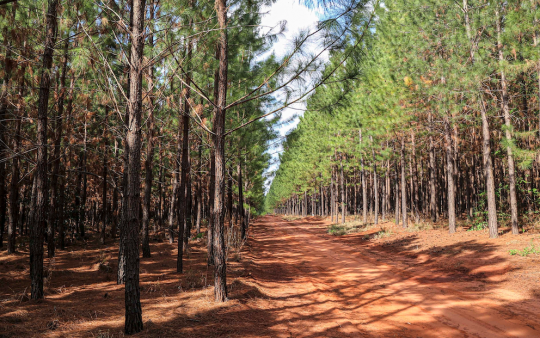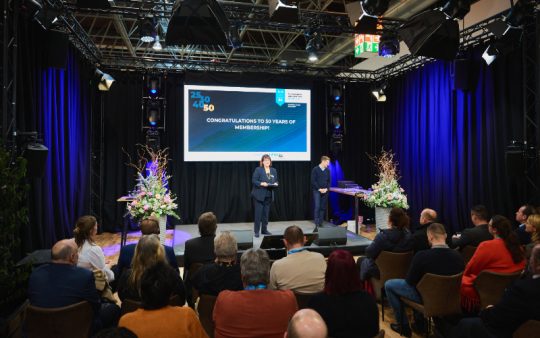Ecological and economic goals are aligned

Published on 02.08.2021
Since the company’s foundation in 1761, wood-cased pencils have been Faber-Castell’s most important products. More than two billion graphite and coloured pencils are produced every year. Faber-Castell can now source up to 80 per cent of its required timber from its own plantations. All additionally purchased wood for the pencil production is derived from certified sustainable sources.
Transparency and trust
Understanding one’s own supply chains is the best way to guarantee a sustainable wood supply: what type of wood is used? What country does it come from? And does it stem from sustainable forestry? The globalisation of supply chains and the diversity of wood products (including pulp and paper) pose great challenges for companies. And it’s also quite difficult for customers to recognise whether or what they can contribute to sustainable forestry.
Internationally recognised certification systems like FSC® (Forest Stewardship Council) or PEFC (Programme for the Endorsement of Forest Certification Schemes) are helpful. Their goal is to make material flows traceable and to exclude non-compliant wood sources from the chain of custody. They have thus become globally recognised product standards for the use of sustainable wood resources, which all parties in the value chain (forestry, wood processing industry, traders, consumers) can rely upon.
Certified sustainable wood sourcing has long been at the centre of Faber-Castell’s sustainability strategy. Its own forests and the forest management in Brazil have been FSC FM certified since 1999, which guarantees environmentally sound, socially responsible and economically sustainable forest management. The chain of custody was first certified by FSC in 2007 and by PEFC in 2010. This leads to a lot of homework: for example, annual internal audits must be carried out at all of the Group’s sites in order to review the material balance as well as the purchasing and production processes, among other things. What’s more, all relevant regulatory requirements that apply in the different countries must be continuously monitored and documented. In addition to the internal audit, the Group’s entire management system is externally audited every year.
Despite the considerable time and effort involved in maintaining such a system, it provides a useful basis for complying with legal requirements such as the EU Timber Regulation (EUTR), the USA’s Lacey Act or the Australian Illegal Logging Prohibition Act.
The regulation, which came into effect in 2013, requires all European importers of timber products to implement a due diligence system. The strict documentation requirements of FSC and PEFC provide reliable and valuable information for this purpose.
Own forests as an example of a sustainable supply chain
In order to meet its demand for timber, Faber-Castell started its own wood supply programme in Prata in the state of Minas Gerais in south-eastern Brazil in the 1980s. On an area of roughly 10,000 hectares, around 300,000 Pinus caribea seedlings are planted and raised every year. Approximately 20 years later the trees are mature enough to be harvested for the production of pencils.
About one third of the company’s own forest area is not used for timber production but instead is dedicated to the protection of biodiversity, i.e. to biological variety and genetic diversity. Many animal and plant species, in some cases in danger of extinction, have been able to find a new habitat in these undisturbed natural environments. Regular counting since 2001 documents the positive increase in biodiversity; the area is now home to around 660 animal species.
In addition to the supply of raw materials, the company’s own forests also serve as a certified source of CO2 compensation certificates. Established as a reforestation project, the forests have captured more than 900,000 tonnes of carbon dioxide from the atmosphere in their biomass according to a study by TÜV Rheinland. These emission reduction certificates are used to compensate the annual carbon dioxide emissions from all manufacturing facilities worldwide, therefore enabling CO2 neutral production.
Sustainable raw materials and environmental protection
Through the local cultivation of raw materials in certified forestry combined with short transportation routes for further processing, a sustainable supply chain has been established in Brazil. As it’s a reforestation project, absorption of CO2 is an additional benefit which makes a positive contribution to the climate protection efforts of the entire Faber-Castell Group. The example shows that certified forestry and timber management can achieve both economic and ecological objectives. Certification by recognised organisations is crucial in this process and allows even small and medium-sized businesses to purchase and process timber with a clean conscience. Further information at: www.faber-castell.de/corporate/sustainability
Image: On an area of roughly 10,000 hectares, around 300,000 Pinus caribea seedlings are planted and raised every year. Approximately 20 years later the trees are mature enough to be harvested for the production of pencils.













